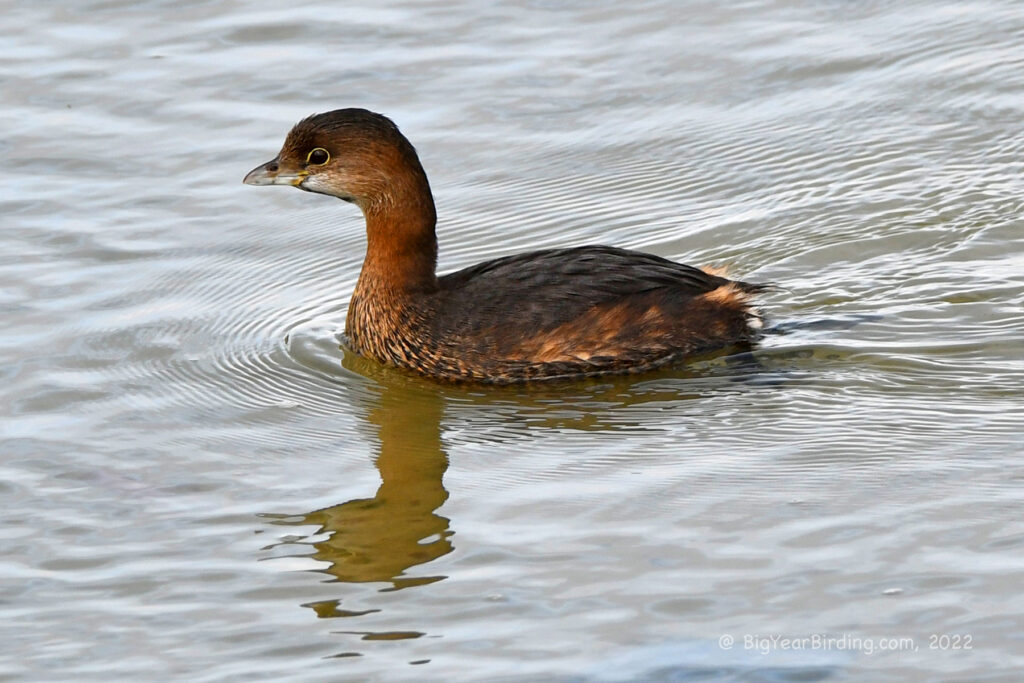
The Pied-billed Grebe, also known as the dabchick, is a small waterbird found throughout North and South America. Adults typically measure between 10 to 16 inches in length and weigh around 8 to 18 ounces. These small, chunky birds have a distinctive appearance, with a short, thick bill that has a black band near the tip, giving them their common name. They also have a brown body, white belly, and a short tail that is often held upright. During breeding season, they develop a brownish-black patch on their throat.

Pied-billed Grebes are typically found in freshwater habitats such as ponds, marshes, and slow-moving rivers. They are excellent swimmers and divers, using their feet to paddle and their wings to help them maneuver underwater. When swimming, they often hold their body low in the water with just their head and neck visible. They are also known for their unique diving behavior, which involves compressing their feathers to reduce buoyancy and then diving underwater for up to 30 seconds at a time to catch fish and other aquatic prey.
Pied-billed Grebes are primarily non-migratory, with some populations staying in their breeding grounds year-round. However, northern populations may move south during the winter months to escape harsh weather conditions. During migration, they may be seen in large flocks, flying low over water bodies. They are not considered to be a threatened species, although habitat loss and degradation can negatively impact their populations.
In addition to their unique appearance and diving behavior, Pied-billed Grebes also have a distinctive call that sounds like a deep, chuckling laugh. They are generally solitary birds, although they may form small groups during migration or in areas with high food availability. During breeding season, males and females will work together to build a floating nest made of plant material, which is anchored to vegetation in shallow water.

Overall, the Pied-billed Grebe is a fascinating and adaptable waterbird with a unique set of physical and behavioral traits. Its ability to swim and dive, as well as its distinctive appearance and call, make it a popular subject for birdwatchers and nature enthusiasts alike.

